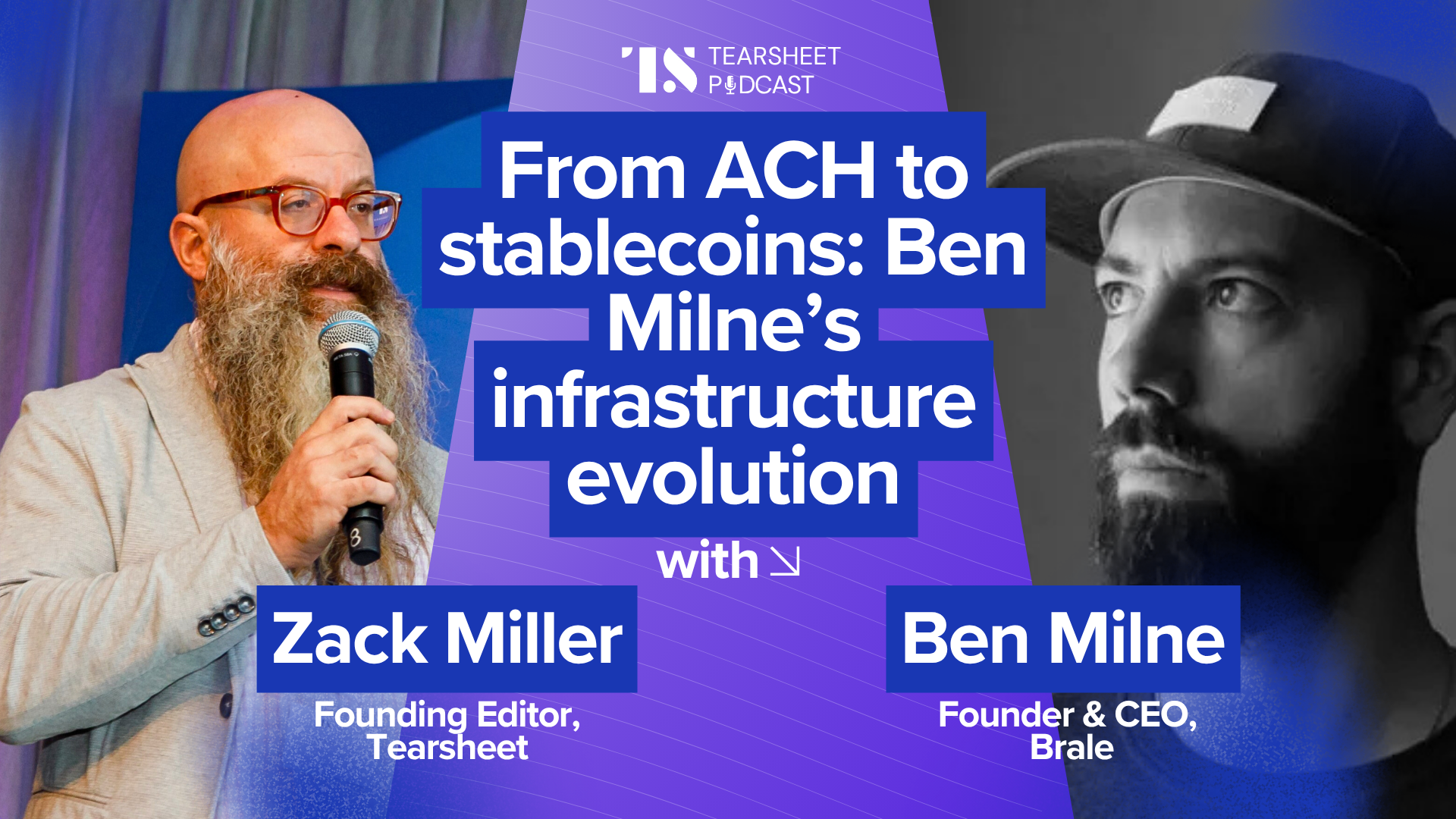From ACH to stablecoins: Ben Milne’s infrastructure evolution
- Ben Milne, founder of Dwolla, discusses his transition to building stablecoin infrastructure at Brale and how institutions can deploy tokenized deposits without massive tech investments.
- The conversation covers strategic considerations for banks evaluating digital assets, from the $1 vs. $100 million build-or-buy decision to practical implementation approaches.

As digital assets mature beyond speculation into practical financial tools, forward-thinking institutions are evaluating how programmable money fits into their product strategies. For traditional banks, it’s an opportunity to modernize settlement systems and explore new revenue streams. For fintechs, it’s about embedding digital asset capabilities without the regulatory and technical overhead.
Today, I’m joined by Ben Milne, whose journey from founding payments innovator Dwolla to now leading Brale offers interesting insights into the evolution of financial infrastructure. At Dwolla, Ben built an API-first payments platform that helped modernize ACH transfers. Now with Brale, he’s creating the infrastructure layer for compliant stablecoin issuance across multiple blockchains.
What’s particularly notable about Ben’s transition is how it reflects broader shifts in the financial services landscape—from renovating legacy rails to building entirely new ones. In our conversation, we’ll unpack how this experience shapes Brale’s approach to working with both incumbents and challengers, the strategic considerations for institutions exploring stablecoins, and what product and strategy executives should be planning for in this rapidly evolving space.
Listen to the episode
Subscribe: Apple Podcasts I SoundCloud I Spotify
Watch the episode
The infrastructure evolution: From legacy rails to programmable money
Ben Milne’s transition from modernizing ACH at Dwolla to building stablecoin infrastructure reflects broader industry shifts toward entirely new financial rails.
“At the time, the shift was that protocols were becoming much better, and were on the time horizon of being the better tool for the job. And stable coins clearly seemed to be the use case for those protocols, but creating it was really expensive and really hard.”
Banks can now deploy blockchain tech that looks like traditional core systems
New protocols like Canton allow financial institutions to leverage distributed ledger benefits while maintaining familiar operational structures and regulatory compliance.
“Infrastructures and protocols like Canton can actually be utilized to mimic internal systems that look and feel like bank core systems, but are running on distributed protocols.”
The $1 vs. $100 million build-or-buy decision
Financial institutions face a stark choice between spending years and massive budgets building proprietary stablecoin infrastructure or partnering with specialized providers for immediate deployment.
“They’re sort of comparing/contrasting with should we spend two years and $100 million in building our own stable coin infrastructure and all of the things. Or, should we work with Brale and we get it in a minute and for $1.”
Institutional stablecoins aren’t competing—they’re extending
Rather than competing with existing stablecoins like USDC, institutional digital assets create interoperable solutions that augment existing payment flows and generate new revenue streams.
“One of the misconceptions people have is that they’re creating their own stable coin, then they’re competing with like a Tether or a Circle. They’re absolutely not. The beautiful part about protocols is you’re just creating something new that’s interoperable with the last thing.”








